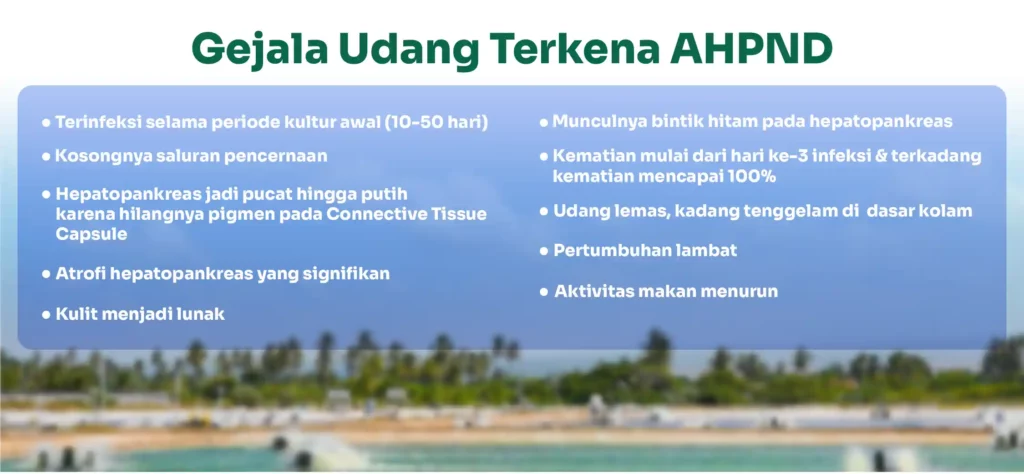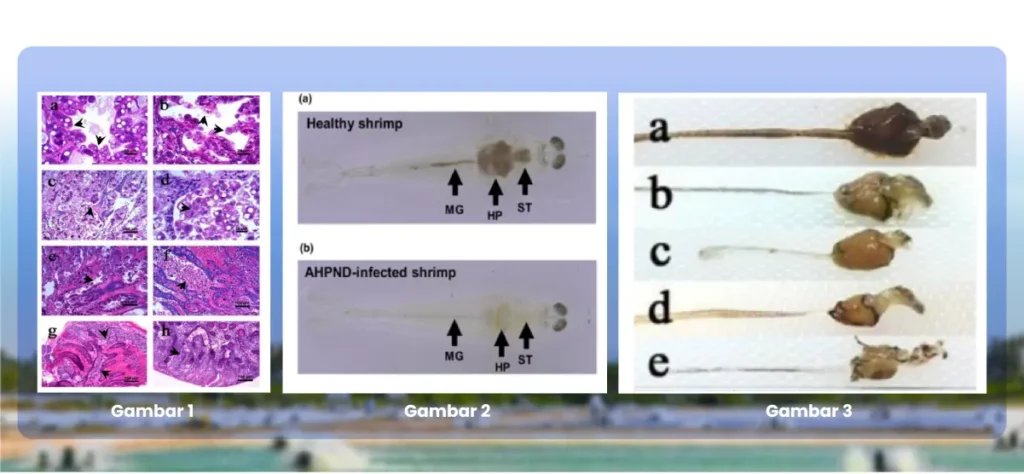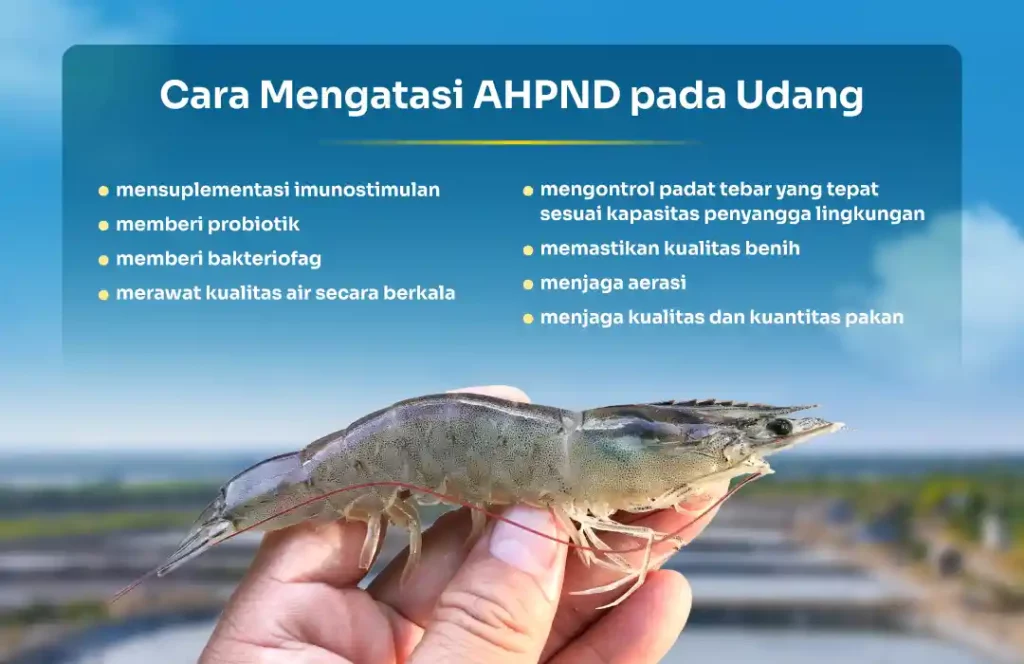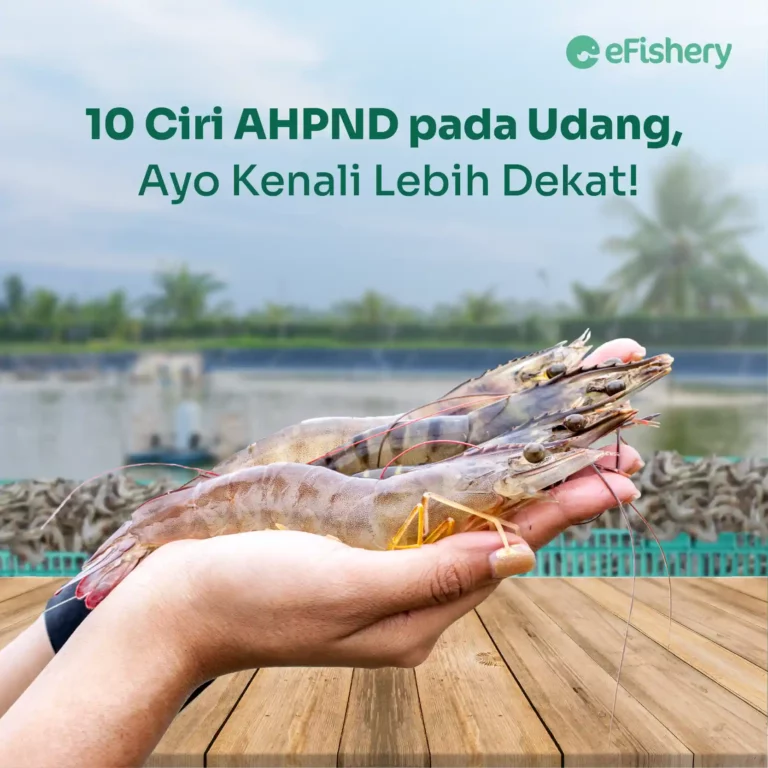One of the problems that many farmers are still facing is Acute Hepatopancreatic Necrosis Disease (AHPND). This disease can cause large losses due to sudden mass mortality of shrimp, so that farmers are often afraid when facing shrimp AHPND disease.
The cause of AHPND is a gram-negative bacterium named Vibrio parahaemolyticus which contains the plasmid pVPA1 which can secrete toxins named PirA and PirB which are the main virulence factors.
So that farmers are not too late to recognize the signs of AHPND disease that attacks shrimp in ponds, you need to recognize the characteristics of shrimp that have been infected with this disease so that they can take steps to deal with it quickly and appropriately.
What is AHPND Disease and What Are the Characteristics?
Before recognizing the characteristics of AHPND disease in shrimp, you need to know what AHPND disease or Acute Hepatopancreatic Necrosis Disease is. AHPND is a disease that attacks shrimp, causing digestive organs such as the midgut, hepatopancreas, and stomach to be pale/white and empty. The disease, which was originally known as Early Mortality Syndrome (EMS), can cause death of up to 100% if not treated properly.
In order not to be late in recognizing the signs of AHPND disease that attacks shrimp in ponds, you need to recognize the characteristics of shrimp that have contracted this disease so that you can take steps to deal with it quickly and precisely.
Symptoms/Clinical Signs Appearing in Shrimp Affected by AHPND

Macroscopic and Microscopic Characteristics of Shrimp Affected by AHPND

Macroscopically, you can see that acute shrimp AHPND infection in Litopenaeus vannamei or vannamei shrimp causes the midgut (MG), hepatopancreas (HP), and stomach (ST) to be pale/white and empty (Figure 2b). This condition is very different from the condition of healthy vannamei shrimp, where the gut is healthy, full, and the digestive tract is brown (Figure 2a).
Based on the bacterial density and histological appearance, the shrimp affected by AHPND were divided into three phases, namely (3a) initial phase, (3b) acute phase, and (3c) terminal phase. In the initial phase (Fig. 3b), the shrimp showed signs of damage in the hepatopancreas. In addition, there is no food in some or all parts of the intestine. In the early phase of this infection, the epithelial cells are elongated and bacteria are found in the digestive tract. In addition, as AHPND progressed, the size of the hepatopancreatic R and B cells decreased further (Fig. 1a–b).
In the acute phase, shrimp affected by AHPND showed signs of lethargy and anorexia (loss of appetite), coupled with an empty digestive tract and loss of tissue pigmentation (Figure 3c). The hepatopancreas became damaged and appeared whitish (Fig. 3d). In addition, there was sloughing/necrosis of the epithelial cells in the hepatopancreatic tubules (Figure 1c-d).
Interestingly, during the acute phase, no bacterial cells are present in the tissues affected by AHPND. This shows that the bacteria that cause AHPND secrete toxins namely PirA and PirB which bind and induce significant damage to epithelial cells in the hepatopancreas. At the end of this acute phase, the epithelium underwent severe necrosis (Fig. 1e–f).
In the terminal phase, similar to the acute phase, the shrimp were anorexic (loss of appetite), lethargic, had an empty digestive tract, and the hepatopancreas was atrophied and had a whitish color (Figure 3e). Tissue damage is mostly carried out by PirA and PirB toxins, as well as bacterial replication at the damage site caused by secondary bacterial infection by other vibrio bacteria (vibriosis) (Fig. 1g-h).
How to Overcome AHPND Disease in Shrimp
After recognizing the various characteristics and physical signs of shrimp affected by AHPND, you can focus on how to handle them.
Some steps that can be taken to treat AHPND are as follows:

Untuk mendapatkan penjelasan lebih detail seputar cara menangani penyakit AHPND yang menyerang tambak, Bapak/Ibu bisa membaca artikel berikut ini tentang cara menangani penyakit AHPND!
Want to know more information about shrimp? Calm down, there is eFarm! An application that helps your shrimp cultivation process. Download now!
Need Help Regarding Shrimp Cultivation Business?
Fill in your personal data in the following form. Our team will immediately contact you via the number cellphone attached. Make sure the data entered is correct.
